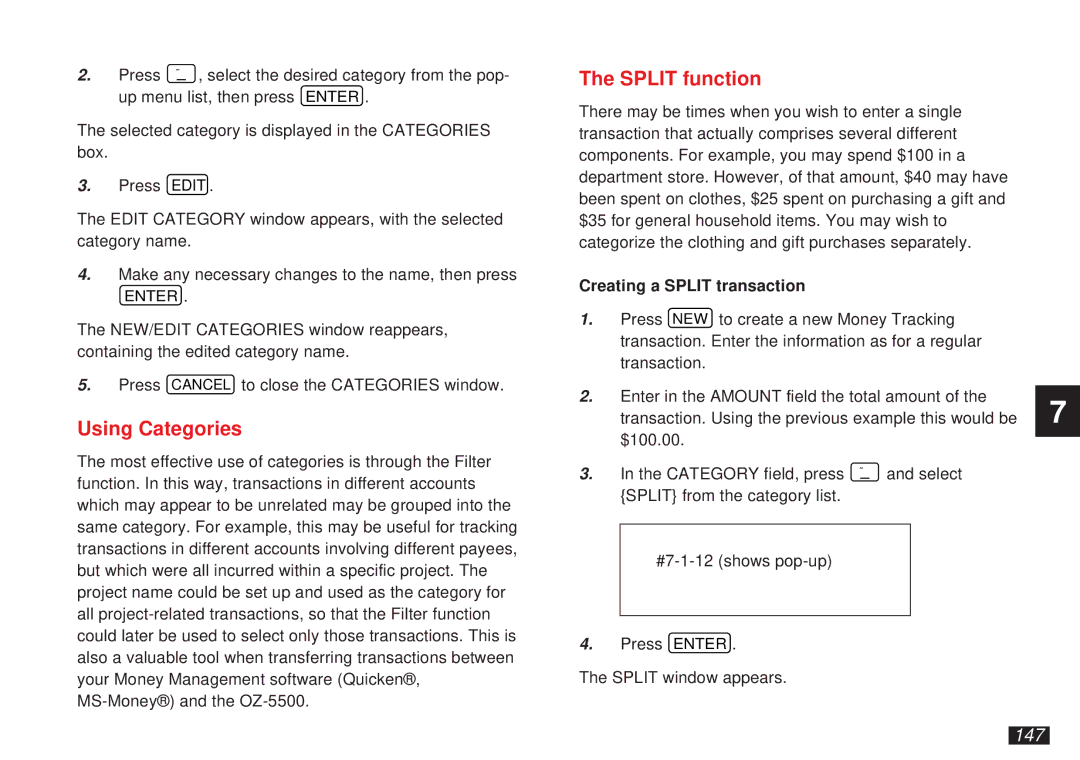
2. Press ˜ , select the desired category from the pop- up menu list, then press ENTER .
The selected category is displayed in the CATEGORIES box.
3.Press EDIT .
The EDIT CATEGORY window appears, with the selected category name.
4.Make any necessary changes to the name, then press
ENTER .
The NEW/EDIT CATEGORIES window reappears, containing the edited category name.
5.Press CANCEL to close the CATEGORIES window.
Using Categories
The most effective use of categories is through the Filter function. In this way, transactions in different accounts which may appear to be unrelated may be grouped into the same category. For example, this may be useful for tracking transactions in different accounts involving different payees, but which were all incurred within a specific project. The project name could be set up and used as the category for all
The SPLIT function
There may be times when you wish to enter a single transaction that actually comprises several different components. For example, you may spend $100 in a department store. However, of that amount, $40 may have been spent on clothes, $25 spent on purchasing a gift and $35 for general household items. You may wish to categorize the clothing and gift purchases separately.
Creating a SPLIT transaction
1.Press NEW to create a new Money Tracking transaction. Enter the information as for a regular transaction.
2.Enter in the AMOUNT field the total amount of the transaction. Using the previous example this would be $100.00.
3. In the CATEGORY field, press ˜ and select {SPLIT} from the category list.
4.Press ENTER .
The SPLIT window appears.
7
